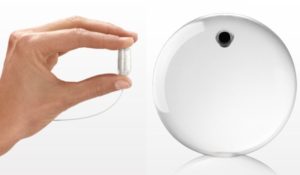OBALON BALLOON SYSTEM
What is an OBALON?
The Obalon Balloon is the first and only swallowable, FDA-approved balloon system indicated for temporary use to facilitate weight loss in adults with obesity (BMI of 30 – 40 kg/m2) who have attempted and failed to lose weight through diet and exercise.The non-surgical treatment should consist of 3 lightweight balloons, placed gradually over 3 months. The balloons occupy space in your stomach so you eat less, making weight loss easier. You should expect the Obalon System to be accompanied by a professionally-supervised diet and exercise program. The Obalon Balloon System is a 6-month treatment.
Is OBALON right for you?
If you’ve tried and Tried and still failed to lose weight through diet and exercise alone, the Obalon Balloon might be what you have been looking for.
You may be a candidate for the Obalon Balloon System if you have:
- BMI of 30 to 40
- 22 years old or older
How does an OBALON works? No Anesthesia. No Surgery.
- Swallow a capsule approximately, the size of a vitamin pill, attached to a micro-catheter.
- Under Xray, your Doctor confirms that the capsule is safely in your Stomach.
- As the capsule dissolves, the Balloon is being inflated with Gas.
- Micro-catheter is then removed quickly and smoothly.
- Procedure is done and with your Doctor’s go signal, you can resume with your daily activities.
The placement of each Obalon balloon typically takes less than 10 minutes and does not require sedation.
What are the advantages of Obalon?
- Proven ad Effective Weightloss
- Non Invasive, FDA Approved
- Safe
- Affordable
- Convenient
What are the possible side effects of Obalon?
The most common side effects were mild abdominal pain and nausea which is typically resolved in the 2 weeks.
What is the Weightloss expectation after Obalon?
In a huge clinical study, the Obalon Balloon System was shown to help adults experience clinically meaningful weight loss results. When combined with a diet and exercise program people lost twice as much weight as than with diet and exercise alone. An average of 89% of the total weight lost at 6 months was maintained at 1 year.
How is Obalon Balloon System removed?
At the end of the 6-month treatment, all three balloons are removed approximately in 15 minute time. Carried out as an outpatient endoscopic procedure which is performed under light, conscious sedation.
What are the Contraindications of Obalon?
- Anatomical abnormalities that inhibits swallowing or passage through any portion of the entire Gastrointestinal (GI) Tract.
- Previous surgeries that may have resulted in intestinal adhesions, narrowing of digestive tract or any condition that inhibit passage through any portion of the Gastro Intestinal tract.
- Patients who have had any bariatric surgery.
- Inflammatory and other pathophysiological conditions of the Gastro Intestinal tract.
- Chronic or acute use of medications known to be gastric irritants
- Untreated Heliocobacter pylori infection.
- Patients who are unable or unwilling to take prescribed proton pump inhibitor medication for the duration of the device implant.
- Allergies to products/foods of porcine origin.
- Patients diagnosed with bulimia, binge eating, compulsive overeating, high liquid calorie intake habits or similar eating related psychological disorders.
- Patients with known history of structural or functional disorders of the stomach including, gastroparesis, gastric ulcer, chronic gastritis, gastric varices, hiatal hernia (> 2 cm), cancer or any other disorder of the stomach.
- Patients requiring the use of anti-platelet drugs or other agents affecting the normal clotting of blood.
- Pregnant or lactating women, or women with an intention to become pregnant.
- Known history of duodenal ulcer, intestinal diverticula (diverticulitis), intestinal varices, intestinal stricture/stenosis, small bowel obstruction, or any other obstructive disorder of the gastrointestinal tract.
- Known history of irritable bowel syndrome, radiation enteritis, or other inflammatory bowel disease, such as Crohn’s disease.
- Patients taking medications on specified hourly intervals that may be affected by changes in gastric emptying, such as anti-seizure or anti-arrhythmic medications.
- Alcoholism or drug addiction.

